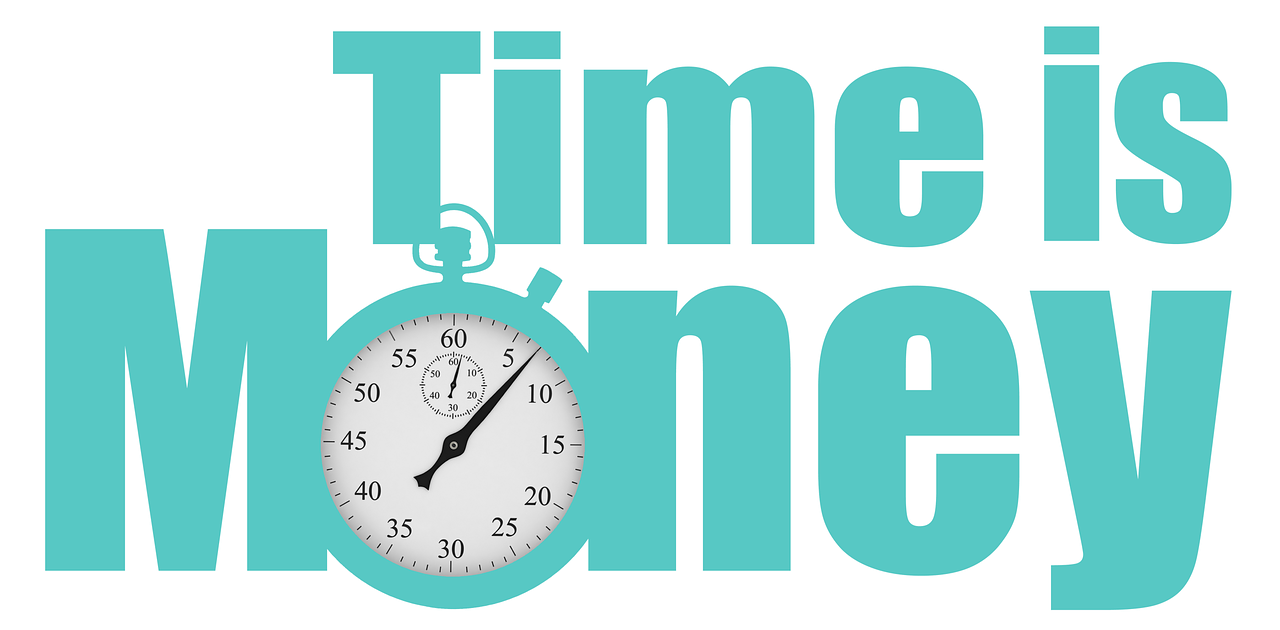Entrepreneurship is a journey lined with uncertainties, challenges, and countless moments where the word “no” echoes louder than “yes.” Navigating criticism and rejection does not just test an entrepreneur’s resolve but often shapes their trajectory. Far from mere obstacles, these experiences forge resilience, hone adaptability, and sharpen emotional intelligence — essential traits for business survival and growth in 2025 and beyond. For someone launching a startup or managing a growing business, understanding how to transform rejection into valuable Feedback and develop a robust GrowthMindset enables moving beyond setbacks with courage and perseverance. From funding pitches that fall flat to critical reviews that sting, learning to handle rejection gracefully and learning from it is an art and science vital for long-term success. Exploring practical strategies and mindsets, enriched with insights from seasoned coaches and successful founders, this comprehensive guide unpacks how entrepreneurs can turn criticism into a springboard for innovation and self-awareness, turning every challenge into a stepping stone toward their vision.
Mastering the Art of Overcoming Fear of Rejection for Entrepreneurs
The journey of entrepreneurship inherently involves risk-taking and exposure to potential rejection. Fear of rejection often acts as a significant barrier, preventing many promising entrepreneurs from pursuing ideas or pitching their concepts confidently. This emotional hurdle stems from the vulnerability involved in putting one’s vision forward, facing potential failure, and the associated self-doubt. Recognizing that rejection is not a reflection of personal worth but a common, even necessary, aspect of the entrepreneurial process is a powerful mindset shift. Overcoming this fear requires cultivating a resilient spirit, informed SelfAwareness, and a GrowthMindset that views rejection as essential feedback rather than defeat.
Practical strategies to diminish the fear of rejection:
- Normalize rejection: Understand that every entrepreneur faces rejection multiple times on their path to success. Accepting this as a natural part of the process reduces Anxiety and overthinking.
- Reframe rejection as Learning: Instead of reacting emotionally, analyze what the rejection can teach you. For instance, a declined pitch might indicate a market mismatch or communication gap.
- Decouple personal identity from outcomes: Maintain a clear separation between your business’s success or failure and your own value as an individual, fostering emotional intelligence.
- Positive self-talk and affirmation: Reinforce your competencies and previous achievements regularly to build internal confidence.
- Goal-oriented focus: Concentrate on long-term objectives rather than single instances of rejection, sustaining motivation and keeping perspective.
Entrepreneurs who have embodied these approaches showcase stories of persistence turning fear into courage. Notably, serial entrepreneur Sarah Li acknowledges in an interview how early failures and investor rejections refined her pitch and business model, ultimately leading her fintech startup to secure Series A funding. This resilience exemplifies that managing fear is less about avoidance and more about embracing rejection as a vital form of Feedback on your entrepreneurial journey.
| Technique | Benefit | Example |
|---|---|---|
| Normalize Rejection | Reduces emotional overwhelm | Pitch meetings rejected but refining pitch based on critiques |
| Reframe Rejection | Transforms setbacks into learning experiences | Identifying missing market fit after customer feedback |
| Decouple Personal Identity | Increases emotional resilience | Separating self-esteem from client refusals |
| Positive Self-talk | Boosts confidence and perseverance | Reflecting on past achievements after negative feedback |
| Goal Orientation | Keeps motivation high | Focusing on long-term business plans despite initial failures |

Implementing these methods empowers entrepreneurs to enter conversations and pitches with greater Adaptability and courage, as they understand rejection as a manageable, even productive element of their growth process, an assertion supported by resources like FasterCapital and Forbes Coaches Council.
Understanding the Reasons Behind Entrepreneurial Rejection
Knowing why rejection occurs is pivotal to managing it constructively. Often, rejection stems not from personal flaws but from situational factors and mismatched expectations or communication gaps. When entrepreneurs comprehend these dynamics, they can better adapt their strategies and messaging, turning Rejection into insightful Feedback rather than discouragement.
Common causes of rejection and how to address them:
- Lack of clarity or understanding: If investors or clients don’t fully get your idea, simplify your message. Use relatable language that highlights the problem and your unique solution.
- Perceived lack of value: Demonstrate tangible benefits and a clear value proposition. Use data, testimonials, or case studies to build credibility.
- Resistance to change: Many stakeholders prefer the status quo. Address fears by explaining implementation steps and minimizing perceived risks.
- Personal rapport issues: Sometimes, the chemistry doesn’t match. While challenging, it’s crucial to recognize when to seek alternative opportunities without personalizing rejection.
For example, a tech entrepreneur pitching cutting-edge AI solutions may face rejection from traditional investors unfamiliar with the field. By educating investors and framing the product in terms of practical benefits, the entrepreneur improves chances of acceptance on the next approach. Similarly, recognizing that timing matters helps as sometimes rejection reflects readiness rather than potential.
| Reason | Description | Actionable Response |
|---|---|---|
| Lack of Understanding | Idea too complex or jargon-heavy | Simplify and clarify messaging |
| Low Perceived Value | Benefits unclear or unproven | Showcase value via data and examples |
| Resistance to Change | Comfort with status quo | Outline risk mitigation and smooth transition |
| Personal Differences | Personality or style clash | Recognize and seek better suited partners |
Understanding these common pitfalls and learning how to respond is critical for maintaining Persistence and Adaptability. Helpful advice on this is extensively discussed in articles such as Miguel Alfaro’s insights on handling rejection and LinkedIn expert advice on criticism management.

By diagnosing why rejections happen, entrepreneurs can refine their approach, enhance communication, and sharpen their pitch, effectively turning perceived setbacks into strategic pivots—a hallmark of successful business leaders in 2025.
Learning From Rejection: Turning Setbacks into Stepping Stones
Entrepreneurship without rejection is a myth. Those who succeed consistently use setbacks as powerful learning tools. Developing a deep level of SelfAwareness and emotional intelligence allows entrepreneurs to harness the full learning potential of rejection and criticism, fueling ongoing growth and perseverance.
Steps to extract growth from rejection:
- Accept rejection without personalization: Viewing criticism as a reflection of the idea or presentation, not personal worth, reduces emotional friction.
- Systematic analysis: Document rejections, note patterns in feedback, and analyze what could be improved.
- Iterate and adapt: Use insights to tweak strategy, product design, messaging, or target market for better alignment.
- Maintain positivity: Celebrate small wins and use them to balance the emotional toll of rejection.
- Seek mentorship and support: Engaging with peers or coaches helps to gain external perspectives and emotional backup.
For instance, founder Michael Ortiz credits his company’s turnaround from early rejections to embracing customer feedback loops, fundamentally redesigning product features based on constructive criticism. His story emphasizes perseverance and learning as key entrepreneurial virtues.
Cultivating such an adaptive learning approach is crucial as markets become increasingly competitive and technology evolves rapidly into 2025.
| Action | Benefit | Outcome |
|---|---|---|
| Accept Without Personalizing | Reduces emotional stress | Ability to see feedback objectively |
| Analyze Feedback | Identifies areas for improvement | Refined product or approach |
| Iterate & Adapt | Improves market fit | Higher acceptance rates |
| Maintain Positivity | Boosts morale | Continued motivation |
| Seek Support | Provides new perspectives | Enhanced decision-making |
Entrepreneurs investing in this learning framework develop the resilience and courage necessary to navigate criticism and rejection with grace and strategic thinking, enhancing both personal and business growth as promoted in sources like Entrepreneur.com.
Developing a Growth Mindset and Thick Skin to Thrive Amid Criticism
Central to managing rejection effectively is the cultivation of a GrowthMindset and the development of a thick skin. These qualities help entrepreneurs detach from the sting of criticism and view setbacks as opportunities to evolve. Cultivating emotional intelligence complements this by fostering self-control and empathy in interactions, ensuring constructive rather than defensive responses.
Key practices for strengthening mental resilience:
- Embrace failures as learning opportunities: Viewing every rejection as a chance to improve rather than as a setback.
- Practice emotional detachment: Separating personal feelings from business feedback to maintain objectivity.
- Stay focused on vision: Keeping the long-term mission clear despite short-term setbacks.
- Cultivate persistence: Committing to continuous effort and adaptation irrespective of hurdles.
- Celebrate small wins: Recognizing progress boosts morale and reinforces perseverance.
Jay Samit, a revered entrepreneur and author, emphasizes that recognizing personal blind spots and openly seeking out constructive criticism can be transformative. For example, former engineer-turned-CEO Linda found her skills in software superb but struggled with sales leadership. Embracing a growth mindset enabled her to build a skilled sales team and delegate effectively, driving growth. This approach to self-awareness and adaptability demonstrates entrepreneurship’s evolving skill set.
| Practice | Effect | Example |
|---|---|---|
| Embrace Failures | Encourages innovation and risk-taking | Pivoting business model after a failed product launch |
| Emotional Detachment | Maintains objectivity during feedback | Responding calmly to critical investor comments |
| Focus on Vision | Keeps motivation consistent | Continuing product development despite delays |
| Persistence | Ensures long-term success | Repeatedly approaching investors until funding secured |
| Celebrate Wins | Builds morale and optimism | Marking milestones with the team |

Learning these skills aligns with research and advice widely discussed among business coaches and leadership experts, such as those featured in Medium articles and Zeeshan Hayat’s strategies.
Effective Strategies to Move Quickly Past Rejection and Stay Motivated
One of the most important entrepreneurial skills is the ability to recover rapidly after rejection. Lingering on negative outcomes not only drains energy but can impede progress. Coupled with this is the necessity to maintain long-term motivation despite inevitable setbacks. Proven strategies equip entrepreneurs to keep momentum, turning challenges into fuel for innovation and growth.
Actionable tips to bounce back and remain driven:
- Develop a thick skin: Build emotional resilience by not internalizing rejection.
- Analyze and learn swiftly: Identify lessons and adjust strategy without delay.
- Maintain perspective: Keep the broader business vision in focus, resisting discouragement from temporary setbacks.
- Stay connected with supportive mentors and peers: Lean on community to gain encouragement and constructive feedback.
- Remember your ‘why’: Continuously reconnect with your purpose and passion to energize perseverance.
For example, entrepreneur David Chang shared his experience of over 100 investor rejections before successfully launching a profitable tech platform. His practice of quick adaptation, paired with unwavering belief in his vision, exemplifies key traits of successful founders. Insights from Insights Business and Entrepreneur magazine reinforce these points.
| Strategy | Purpose | Impact |
|---|---|---|
| Thick Skin | Deflect emotional impact | Enabled repeated pitching despite refusals |
| Rapid Learning | Improve swiftly | Refined product and pitch after each rejection |
| Perspective | Stay focused on goals | Avoid entrapment in negativity |
| Support Network | Encourage and advise | Boosted morale during low points |
| Connect with Purpose | Fuel perseverance | Maintained motivation over time |
Entrepreneurial Resilience Quiz
Mastering these strategies turns rejection from an isolating event into a renewal point for entrepreneurial Persistence and innovative problem solving.
Questions about Handling Criticism and Rejection as an Entrepreneur
How can I prevent rejection from affecting my confidence?
Separating your personal value from your business outcomes is essential. Use positive self-talk and focus on past successes to reinforce self-esteem. Viewing rejection as feedback rather than failure maintains confidence.
What are the best ways to learn from negative feedback?
Document each rejection, noting any constructive criticism. Analyze patterns and make specific changes to your product, pitch, or approach accordingly. Engage mentors for external perspectives to deepen learning.
How do I stay motivated after continuous setbacks?
Revisit your core mission regularly to remember your purpose. Surround yourself with a supportive community, celebrate small victories, and adopt a GrowthMindset to see setbacks as temporary and valuable lessons.
Is it helpful to seek feedback after rejection?
Yes. Requesting feedback can reveal blind spots and deepen SelfAwareness. It helps clarify reasons behind rejection and guides improvements. Approach feedback with openness to maximize learning.
How can emotional intelligence improve handling of criticism?
By developing emotional intelligence, you become better able to manage emotional responses, empathize with others, and respond constructively. This leads to improved investor relations and client communication, strengthening business resilience.


